wyse guide sourdough bread
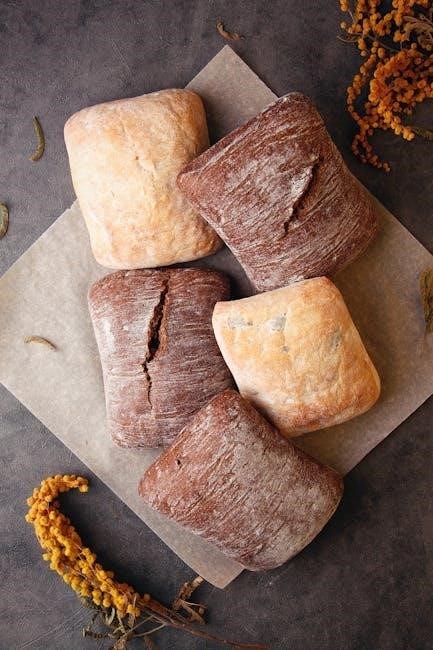
Sourdough bread is a traditional, artisanal bread known for its tangy flavor and chewy texture, made using a natural starter instead of commercial yeast. Its unique taste and homemade charm have made it a favorite among bakers and food enthusiasts worldwide.
What is Sourdough Bread?
Sourdough bread is a traditional, fermented bread made using a natural starter culture instead of commercial yeast. It relies on wild yeast and lactic acid bacteria present in the starter, which ferments the dough over a longer period. This process gives sourdough its distinctive tangy flavor, chewy texture, and thick crust. Each starter is unique, contributing to the bread’s characteristic taste and aroma, making it a beloved choice for artisanal bakers and enthusiasts alike.
Why Make Sourdough Bread?
Making sourdough bread is a rewarding and fulfilling process that combines art and science. It promotes gut health through natural fermentation, creating a nutrient-rich loaf. Sourdough baking brings families together and offers a sense of accomplishment. Whether you’re a novice or experienced baker, the joy of crafting homemade bread is unmatched, making the effort and patience worthwhile for that perfect, tangy loaf.
Benefits of Sourdough Bread
Sourdough bread offers numerous health benefits due to its natural fermentation process. It contains gut-friendly bacteria like lactobacillus and acetobacillus, which aid digestion and boost nutrient absorption. The slower fermentation enhances the bread’s nutritional profile, making it easier to digest than traditional bread. Additionally, sourdough’s lower glycemic index makes it a healthier choice for blood sugar management. Its unique, tangy flavor and dense texture also set it apart from conventional bread, making it a favorite for health-conscious food lovers.
Ingredients and Tools
Bread flour, water, salt, and a sourdough starter are the essential ingredients. Tools like a mixing bowl, dough scraper, and a Dutch oven are key for preparation and baking.
Essential Ingredients for Sourdough Bread
The core ingredients are simple: high-protein bread flour provides structure, water hydrates the dough, and salt enhances flavor. A healthy, active sourdough starter replaces commercial yeast, offering natural fermentation. Olive oil can be added for a tender crumb. Using filtered water and unbleached flour ensures better fermentation and flavor. Avoid commercial yeast, as it defeats the purpose of true sourdough. Quality ingredients are crucial for achieving the authentic taste and texture of sourdough bread.
The Role of a Sourdough Starter
A sourdough starter is a fermented mixture of flour and water teeming with wild yeast and lactic acid bacteria. It acts as the natural leavening agent, replacing commercial yeast. The starter’s bacteria ferment sugars, producing lactic acid for the bread’s tangy flavor and acetic acid for its aroma. Regular feeding maintains its health, ensuring robust fermentation and a light, airy texture. A vibrant starter is the heart of sourdough bread, defining its unique character and complexity.
Tools You’ll Need for Baking
To bake sourdough bread, essential tools include a large mixing bowl, measuring cups, and a dough scraper for handling sticky dough. A Dutch oven or baking stone is ideal for achieving a crispy crust. Parchment paper simplifies transferring the dough, while a sharp knife or lame helps score the bread. Optional tools like a stand mixer or proofing basket can enhance the process. These tools ensure efficiency and quality in crafting your perfect loaf.

Creating Your Sourdough Starter
Creating a sourdough starter is simple yet rewarding. Mix flour and water to foster wild yeast and bacteria, allowing it to ferment naturally. Patience is key as it develops over days, becoming bubbly and active—essential for authentic sourdough bread. This natural process is the foundation of traditional bread-making, ensuring a unique flavor and texture in every loaf.
How to Make a Sourdough Starter
To create a sourdough starter, mix equal parts of flour and filtered water in a clean glass or ceramic container. Cover it loosely and let it rest in a warm, draft-free place. Over the next few days, it will begin to bubble and emit a sour smell, indicating fermentation. This natural process harnesses wild yeast and bacteria, forming the foundation of your starter. Regular feeding with fresh flour and water will keep it active and healthy for baking.
Feeding and Maintaining Your Starter
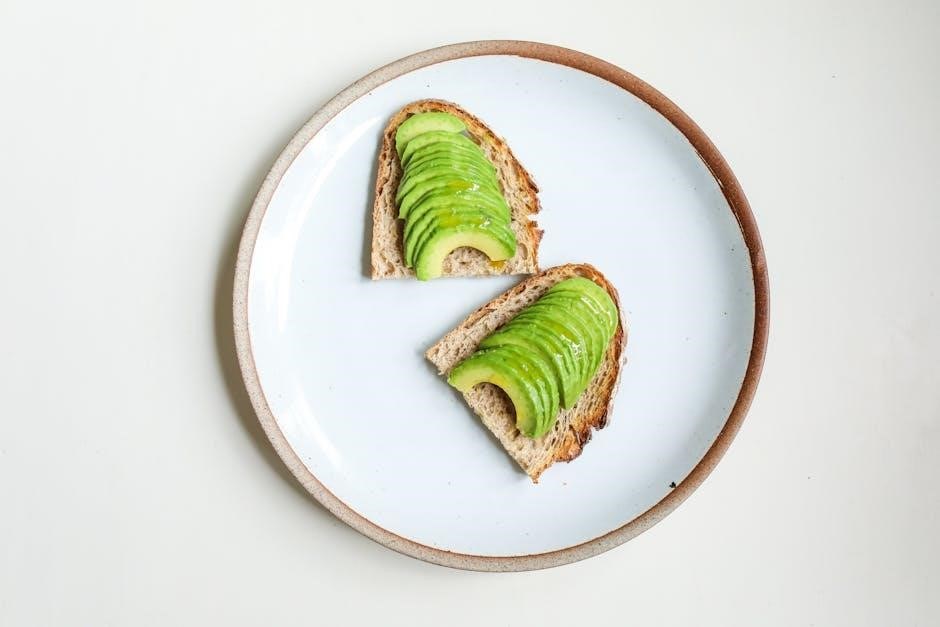
Feeding your sourdough starter involves discarding half of it and adding fresh flour and water daily. This process keeps the starter active and balanced. Use a 1:1:1 ratio of starter to flour to water. For example, 50g starter, 50g flour, and 50g water. Regular feeding ensures it remains healthy and robust, ready for baking. Store it in a cool place or refrigerator if not used frequently, feeding it once a week to maintain its vitality and performance.
The Sourdough Bread Recipe
A simple, foolproof sourdough bread recipe perfect for beginners and experienced bakers alike. Requires just 5 ingredients and minimal hands-on time, yielding a light, chewy, and tangy loaf.
Step-by-Step Dough Preparation
Mix 100g active sourdough starter, 350g warm water, and 500g bread flour in a large bowl until combined. Add 10g sea salt, stirring until dissolved. The dough will be shaggy. Cover and rest for 20-30 minutes, then perform a gentle stretch and fold. Repeat this process 2-3 times. Cover and let proof overnight at room temperature. In the morning, shape the dough gently, place it on parchment, and let rest before baking.
Fermentation Process Explained
Fermentation is the heart of sourdough bread-making, where the natural yeast and bacteria in the starter break down sugars, producing lactic acid and carbon dioxide. This process gives sourdough its tangy flavor and chewy texture. The dough ferments slowly over hours, developing a bubbly, airy structure. Proper fermentation requires patience, as it relies on the starter’s activity and environmental conditions like temperature and time to achieve the perfect rise and flavor.
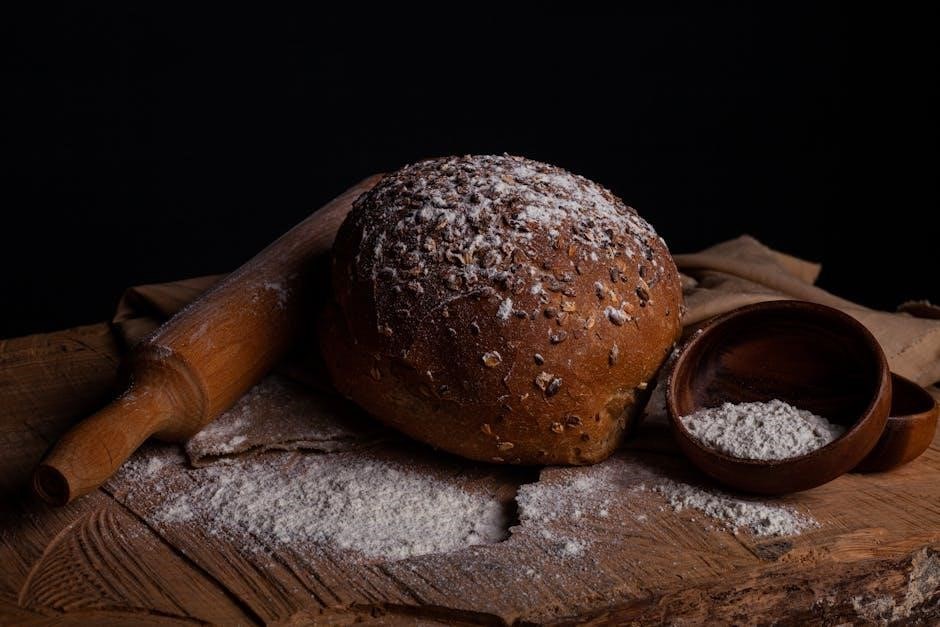
Baking Your Sourdough Bread
Baking sourdough bread requires a hot, steamy environment to achieve a crispy crust and airy interior. Preheat your oven to 475°F, use a Dutch oven for best results, and bake for 30-40 minutes. Steam helps create the perfect texture—try adding ice cubes to the oven. Always preheat thoroughly and check for doneness by tapping the bottom of the loaf.
Preparation for Baking
Preheat your oven to 475°F (245°C) with a Dutch oven or baking stone inside. Lightly dust a parchment-lined peel or inverted baking sheet with cornmeal. Gently place the shaped dough onto the prepared surface, ensuring minimal handling to preserve air pockets. Score the bread with a sharp blade or razor, creating 2-3 diagonal cuts. Once the oven is preheated, carefully transfer the dough to the hot Dutch oven or stone. Add ice cubes to the oven for steam, then bake.
Baking Techniques and Tips
Preheat your oven to 475°F (245°C) with a Dutch oven or baking stone inside. Use steam by adding ice cubes to the oven to enhance crust development. Score the dough deeply before baking to control expansion. Bake for 30 minutes covered, then 15-20 minutes uncovered to achieve a golden crust. Monitor the internal temperature, aiming for 205-210°F (96-99°C). Let the bread cool on a wire rack for at least 1 hour before slicing for the best texture and flavor.
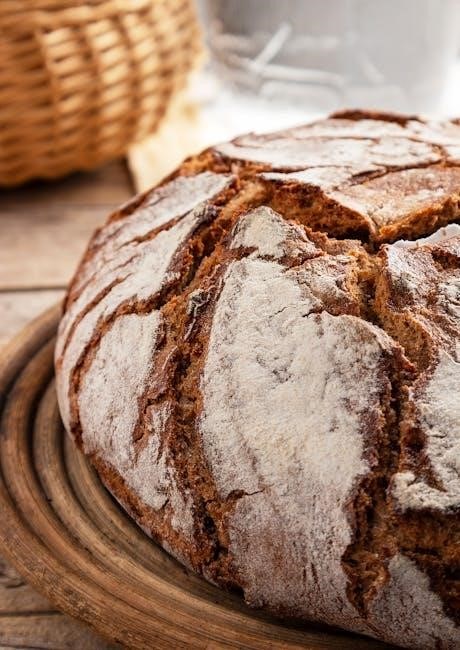
Beyond the Basics
Explore advanced techniques and creative recipes to elevate your sourdough game, from experimenting with unique flours to crafting intricate bread designs that refine your baking skills.
Advanced Sourdough Techniques
Once you’ve mastered the basics, explore advanced techniques like adjusting hydration levels, incorporating whole grains, or experimenting with flavored additions. Try enhancing proofing times for complexity or creating intricate designs. These methods refine your skills and expand your creative possibilities, allowing you to craft unique, artisanal loaves that showcase your personal style and baking prowess.
Experimenting with Different Flours and Ingredients
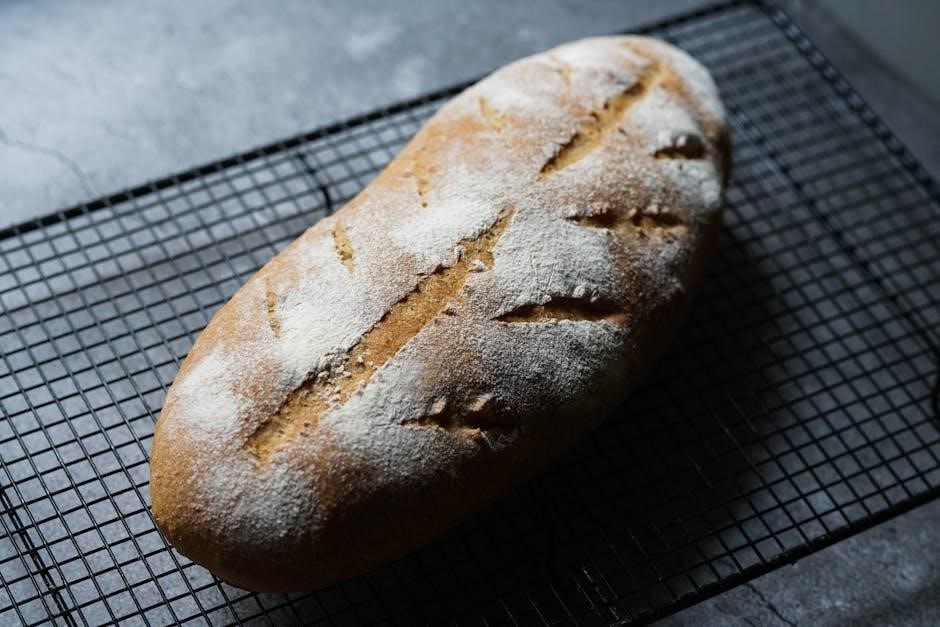
Venture beyond traditional bread flour by incorporating whole grains, rye, or ancient flours like spelt or Kamut. Add-ins such as nuts, seeds, herbs, or dried fruits can enhance texture and flavor. Even olive oil or honey can elevate your loaves. These variations allow you to create unique, nutrient-rich sourdough breads that cater to diverse tastes and dietary preferences, keeping your baking journey fresh and exciting.
Tips for the Perfect Loaf
Mastering sourdough requires attention to temperature, hydration, and timing. Ensure your starter is active, use quality ingredients, and maintain consistent proofing conditions for optimal results and a perfect bake.
Common Mistakes to Avoid
When baking sourdough, avoid using an inactive starter, as it won’t rise properly. Overmixing the dough can lead to a dense loaf, so mix just until ingredients combine. Inconsistent room temperature and humidity can disrupt fermentation; maintain a warm, draft-free environment. Overproofing is another common error—bake when the dough has doubled but still feels firm. Lastly, don’t skip the resting periods, as they are crucial for gluten development and flavor. Patience is key to achieving the perfect sourdough loaf.
Troubleshooting Sourdough Bread Issues
If your sourdough isn’t rising, check your starter’s activity and ensure proper fermentation conditions. A dense loaf may result from underproofing or overmixing. If the crust is too thick, try adjusting baking time or temperature. For a soggy interior, ensure the bread is fully baked and cooled properly. Cracks on the surface can indicate overproofing or uneven oven heat. Addressing these issues requires patience and attention to detail to achieve a perfect loaf.
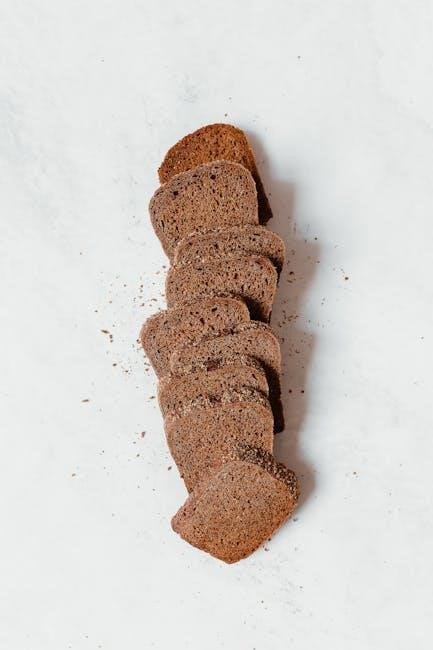
Sourdough Bread Variations
Explore creative variations like whole grain, rye, spelt, and buckwheat sourdough, or infuse flavors such as garlic, herbs, cheese, nuts, seeds, dried fruits, or even chocolate for unique twists.
Whole Grain Sourdough

Whole grain sourdough offers a nuttier, earthier flavor and increased nutritional value compared to traditional white flour sourdough. By using whole wheat, rye, or ancient grains, bakers can create loaves rich in fiber, vitamins, and minerals. The denser texture and deeper taste make it a favorite for health-conscious enthusiasts, while the longer fermentation enhances digestibility and brings out the natural sweetness of the grains. It’s a hearty, wholesome option for any meal.
Flavored Sourdough Breads
Flavored sourdough breads add creativity to the traditional recipe, offering unique twists like garlic and rosemary or dried fruits. These variations enhance the bread’s natural tanginess with aromatic herbs, sweet elements, or savory ingredients. Perfect for experimenting, they provide endless possibilities for pairing with meals or as standalone snacks, making each loaf a delightful culinary adventure that goes beyond the classic sourdough.
Storing and Serving Sourdough Bread

Sourdough bread is best stored in a cool, dry place or refrigerated to preserve freshness. For serving, slice and toast or enjoy with your favorite spreads and dishes.
How to Store Sourdough Bread
Store sourdough bread in a cool, dry place, such as a paper bag or cloth-covered container, to maintain its crust and freshness. For longer storage, refrigerate or freeze slices for up to a month. This preserves the bread’s texture and flavor, ensuring it remains a delicious treat for days to come.
Best Ways to Serve Sourdough
Sourdough bread is versatile and can be enjoyed in various ways. Slice it thinly and serve with butter, jam, or olive oil for a simple breakfast. Pair it with soups or stews for a hearty meal, or use it as a base for sandwiches or toast. Its tangy flavor and chewy texture make it a perfect accompaniment to any dish, enhancing flavor profiles and adding a rustic charm to your dining experience.
Sourdough baking is a rewarding journey, offering delicious results and creative freedom. Thanks for joining this guide—happy baking, and enjoy the joy of homemade bread!
Final Thoughts on Sourdough Baking
Sourdough baking is a journey that combines art and science, offering a fulfilling experience for bakers of all levels. The process requires patience, as the natural fermentation process takes time to develop, but the result is a bread that’s not only delicious but also healthier due to its lower phytate levels and higher nutrient availability. The tangy flavor and chewy texture make it a standout in the world of bread, and with practice, anyone can master this traditional craft. Embrace the simplicity of ingredients and the joy of creating something from scratch. Whether you’re a novice or an experienced baker, sourdough offers endless possibilities for experimentation and creativity, making it a rewarding hobby that brings people together through the shared love of homemade bread.
Encouragement for Continuous Baking
Baking sourdough bread is a rewarding journey that fosters creativity and patience. Each loaf offers a chance to refine your skills and experiment with new flavors. Don’t be discouraged by early challenges—every batch brings growth. Embrace the process, and remember, the joy lies in the creation. Keep exploring, and soon you’ll find baking sourdough becomes a therapeutic ritual. Share your bread with others and enjoy the pride of crafting something truly special.



Leave a Reply
You must be logged in to post a comment.